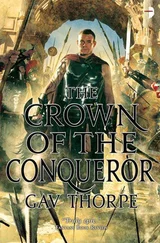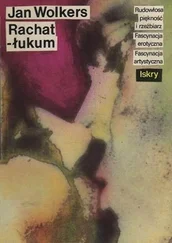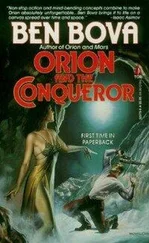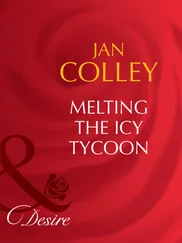In the second sequence, a parallel walk which was woven, or crosscut, into the first, one saw Sigrid Undset strolling through London, an industrial city full of the clamour of machinery, with a book in her hand, smoking a cigarette; Sigrid Undset, a modern woman, walking through the doors of the National Gallery — she had originally wanted to be a painter — where the camera followed her through rooms filled with pictures, this too a mythological forest of sorts, until she stopped in front of Botticelli, one of her favourite painters, in front of his ‘Venus and Mars’, a painting which depicts the almost transcendental character of Nature and of the two figures resting in the forest.
These two elements merged together, therefore, when the newlyweds — back in the strand formed by the first sequence, came to a clearing in the forest where they sat down on the grass, Svarstad leaning back with his eyes shut, she looking pensive, such that they assumed exactly the same positions as Venus and Mars in the Botticelli painting in the gallery. Jonas had Undset glance fleetingly at the sky, as if she really were looking in the direction of Venus — not knowing, of course, that a crater on that planet would one day be named after her — before letting the couple drift into a passionate embrace. This scene encapsulated two key ingredients in Undset’s universe: a couple succumbing to carnal desire, in rapturous performance of the sexual act, and the dense forest in the background, a symbol of the inescapable dark side of life. The programme closed with a blatant sex scene, lingering kisses and ecstatic embraces in the grass, on the bounds of the permissible, and yet with a touch of the religious about it, as if there were a connection between physical love and religion. Not unexpectedly the NRK management had to put up with complaints from the Christian Broadcasting Circle.
Towards the end of the scene Jonas had the camera pull up to reveal that the couple had now moved — if, that is, they had not been there all the time — to the Palace Gardens in modern-day Oslo; the camera panned across the city, down towards Karl Johans gate and the Parliament building. It is not unreasonable to imagine that, with this surprising device, Jonas Wergeland wished to make a point about Norway being stuck in a permanent Middle Age.
Because that is what Undset had taught him: that Norwegians, even those people walking down Karl Johan with their mobile phones and their laptop computers, were living in the Middle Ages, mentally at least and to a greater extent than other nations in Europe; that they were barely done with the sagas, that deep down they were at odds with their own time. Norway had gone from the Middle Ages to a welfare state in the atomic age in just one century — in other words, so quickly that they were still stuck, psychologically speaking, in the medieval peasant society, still had their roots in the earth. Like Undset, most Norwegians cherish an ineradicable mistrust of everything that smacks of a belief in progress and hope for the future. Like Undset, deep in their souls they believe in a static human nature, a heart that never changes. Undset had, in fact, made an invaluable contribution to the understanding of the Norwegian identity: the citizens of Norway — even those sitting back in their comfy new Stressless chairs — are medieval people. There is a very simple reason why Norwegians perceive Sigrid Undset’s historical novels as contemporary fiction: the people of Norway are still living in the past.
To be fair, though: viewed from another — one might almost say, opposite — angle, it could just as well be that, by dint of that same device, Jonas Wergeland wished to say something about what was possibly Sigrid Undset’s greatest achievement: she dragged the Middle Ages out of the darkness so to speak, out of oblivion. She believed that the Middle Ages should be able to shed light on modern-day problems — individualism, materialism, the idea that mankind could be used as a yardstick for the universe — since many of the things lacking in modern society could still be found in medieval beliefs and culture. Sigrid Undset’s positive view of this era anticipated the general reassessment of the Middle Ages made by researchers many years later.
In any case, Jonas Wergeland also realized something else: that there could be no better reason for working with television than this, since television was the perfect medium for ‘medieval people’, folk who lost themselves in fictions, who yearned for simplicity and coherence. Now and again he had the feeling that Norwegians did not regard the unique individuals around whom he built a television series as heroes, but as saints: that in all secrecy, when no one was watching, they kneeled down in front of the TV screen and kissed those images.
Cold, calm, clittering as Ararat’s topmost chunk of ice (Henrik Wergeland: Det Befriede Europa )
Jonas sometimes wondered whether he had been to Yerevan three times or just the once. He remembered standing outside the Matenadaran, a building not unlike a temple, situated a little way up a hillside in the north of the city, surveying the scene below and feeling a kind of light washing over him, something which, for want of a better word, we will have to call a religious experience. It was December, but not uncomfortably cold. Beneath the landscape there sounded a low, barely audible note, or a hum, as if from a colossal dynamo lying somewhere deep under his feet.
In his memory he could see a person, a man smoking a pipe, but occasionally all he recalled was the sight of the mountain before him. Because there, just across the border from Turkey, lay Ararat’s vast massif — Little Ararat to the left, Great Ararat to the right, the latter almost 17,000 feet high, Little Ararat roughly 4,000 feet lower and more conical in shape, not unlike Mount Fujiyama in Japan. It was not hard to guess that this had in the past been a volcanic region. From where Jonas was standing, right below the Matenadaran, the two peaks seemed almost transparent, like a mirage, and the way the sunlight glittered on the glacier at the very top of Great Ararat made Jonas think of Theodor Kittelsen’s painting of the boy standing gazing at Soria Moria Castle, the golden glow on the ridge facing him: ‘A long, long way off he saw something glittering and gleaming.’ Jonas stood there, quite certain of what he would find in the sparkling chunk of ice at the very top — were he suddenly, magically, to find himself up there: a pearl, a pearl ear-stud encased inside the ice.
But there was something else too: something special about that mountain. Tradition had it that Noah’s ark had been left high and dry on the top of Mount Ararat when the floodwaters subsided. A number of expeditions had set out to search for remains of the ark in the glacier at which Jonas was gazing. He had always been fascinated by the story of Noah. It was a tale of survival. About being many and then all at once so few. Being chosen. Like being born again, being given a second chance. Jonas gazed at Mount Ararat, was put in mind of a slumbering dragon, could not take his eyes off that mighty silhouette. He had planned to spend a couple of days in Armenia, but suddenly he felt like staying longer, in some way that he could not explain he felt at home here. If one believed in the legend of Noah, this place was also the cradle of mankind. And there were plenty of down-to-earth historians who maintained that the Indo-European race had its origins in this part of the world. If they were right, and if he were to go far enough back in time, Jonas actually had a distant link with this place.
He stands there gazing out across the town, listening spellbound to the deep thrum beneath or above the landscape, like the note produced by the pedals of an organ: a dark note, or voice, emanating from the very bedrock. The confirmation of a calling. Anything, absolutely anything can happen, thinks Jonas. Anything is possible. At any moment.
Читать дальше











